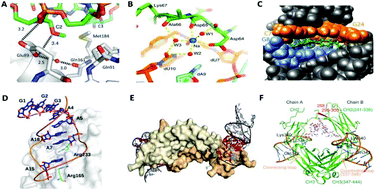Investigations on the interface of nucleic acid aptamers and binding targets
Abstract
Nucleic acid aptamers are single-stranded DNA or RNA of 20–100 nucleotides in length that have attracted substantial scientific interest due to their ability to specifically bind to target molecules via the formation of three-dimensional structures. Compared to traditional protein antibodies, aptamers have several advantages, such as their small size, high binding affinity, specificity, flexible structure, being chemical synthesizable and modifiable, good biocompatibility, high stability and low immunogenicity, which all contribute to their widely applications in the biomedical field. To date, much progress has been made in the study and applications of aptamers, however, detailed information on how aptamers bind to their targets is still scarce. Over the past few decades, many methods have been introduced to investigate the aptamer–target binding process, such as measuring the main kinetic or thermodynamic parameters, detecting the structural changes of the binding complexes, etc. Apart from traditional physicochemical methods, various types of molecular docking programs have been applied to simulate the aptamer–target interactions, while these simulations also have limitations. To facilitate the further research on the interactions, herein, we provide a brief review to illustrate the recent advances in the study of aptamer–target interactions. We summarize the binding targets of aptamers, such as small molecules, macromolecules, and even cells. Their binding constants (KD) are also summarized. Methods to probe the aptamer–target binding process, such as surface plasmon resonance (SPR), circular dichroism spectroscopy (CD), isothermal titration calorimetry (ITC), footprinting assay, truncation and mutation assay, nuclear magnetic resonance spectroscopy (NMR), X-ray crystallography and molecular docking simulation are indicated. The binding forces mediating the aptamer–target interactions, such as hydrogen bonding, electrostatic interaction, the hydrophobic effect, π–π stacking and van der Waals forces are summarized. The challenges and future perspectives are also discussed.

- This article is part of the themed collection: Recent Review Articles


 Please wait while we load your content...
Please wait while we load your content...